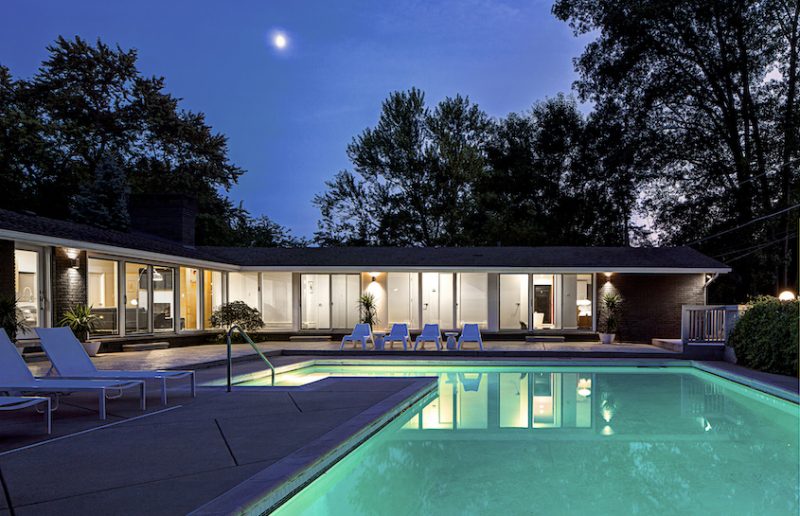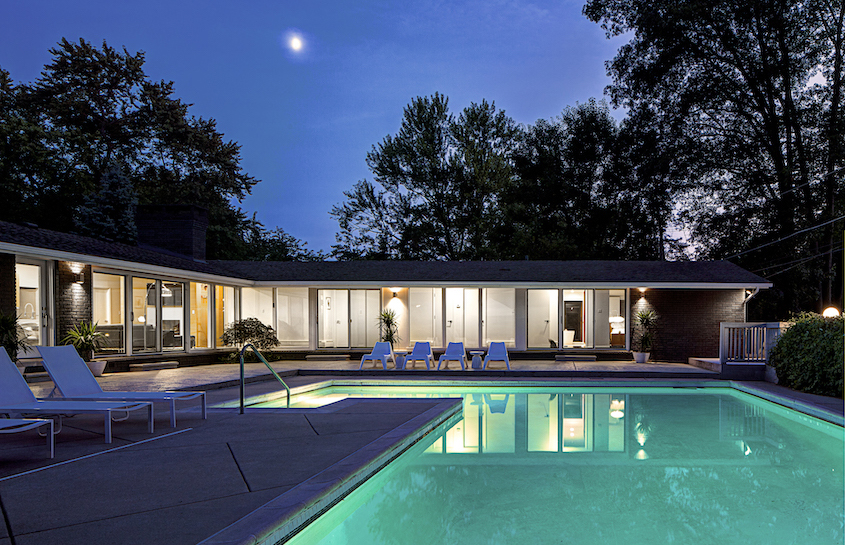
What do places like Columbus, Indiana; Midland, Michigan; and Oak Park, Illinois have in common? They’re all hot pockets for mid century modern architecture—and they’re just the tip of the iceberg when it comes to exploring the Midwest Modern landscape.
As a long-time California girl and MCM aficionado who returned to her Midwestern roots two years ago, re-learning the lay of the land through this lens has been one of my favorite discoveries. Whereas I once made an annual pilgrimage to Palm Springs for Modernism Week, now I can take road trips to Beverly Shores, Indiana to view the “House of Tomorrow” or to Detroit to see the glorious design dome of the GM Technical Center.
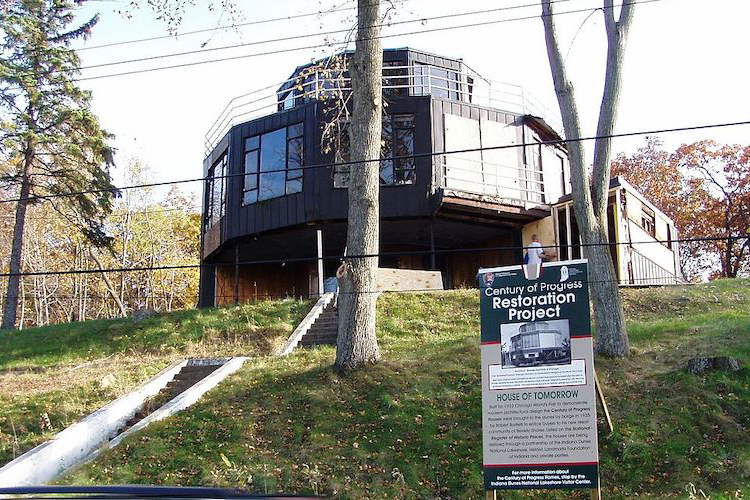
Just a few stops on my growing Midwest Modern bucket list: Wingspread, a sprawling 14,000-square-foot masterpiece in Wisconsin considered to be Frank Lloyd Wright’s largest prairie home; Ludwig Mies van der Rohe’s renowned Farnsworth House on the Fox River in Illinois; and the Miller House in Columbus, Indiana, which is now part of the Indianapolis Museum of Art.
And, as a Clevelander, I won’t have to travel too far to visit the Oberlin-based Weltzheimer-Johnson House, Frank Lloyd Wright’s first Usonian home in Ohio (and the only non-Californian Usonian home to utilize redwood).
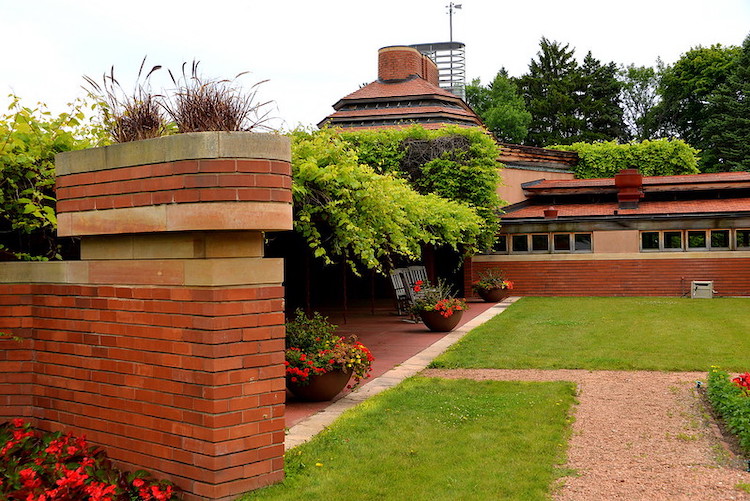
Who Defined Midwest Modern?
It’s also been fun to learn more about the architects and designers who defined mid century modern sensibilities in the Midwest and beyond (like van der Rohe, the Keck Brothers, and Alden B. Dow, to name a few). To that end, architect Michael Poris has coined the phrase “Detroit School” to describe the dream team of folks like Minoru Yamasaki, Florence Knoll, Eero Saarinen, and Charles Eames — all of whom started their careers at Detroit’s Cranbrook Academy of Art and went on to have indelible influence on the design world.
“A lot of what we think of today as mid-century homes and furniture started at Cranbrook and in Detroit,” says Poris, a principal architect at Detroit-based McIntosh Poris Associates.
He adds that the Rust Belt’s industrial influence is also felt in signature mid-mod architectural elements such as curtain walls, which Saarinen developed using metal forming techniques straight out of the automotive industry. “Coming out of the arts and crafts movement, the combination of handcraft and industrial pretty much defined mid-century modern across the country, with the big expanses of glass and metal windows,” adds Poris.
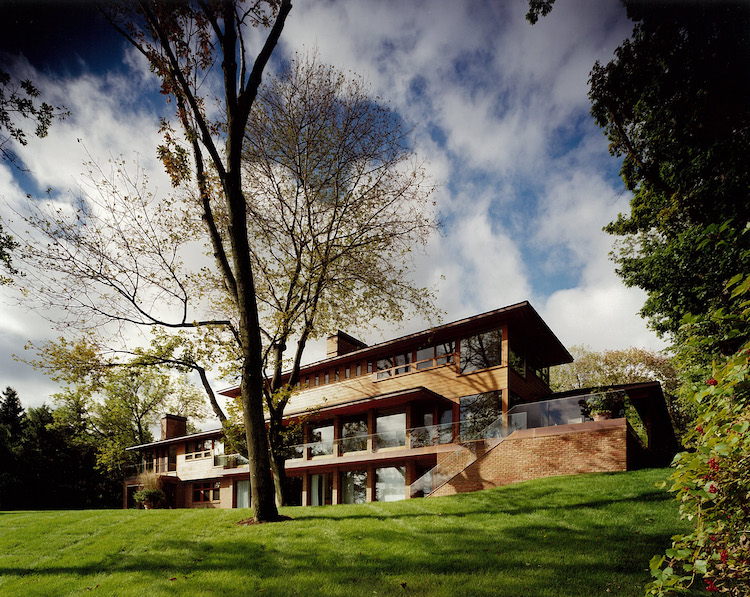
Of course, Michigan isn’t the only state with serious MCM cred. Architectural wonders by these modern tastemakers — and more — can be found throughout the Midwest. A few cases in point: Illinois offers a plethora of Frank Lloyd Wright homes, while Washington University in St. Louis is renowned for its role in turning out influential MCM architects. (Plus, the St. Louis Arch itself was designed by Eero Saarinen.)
Architectural Signatures of the Region
And while the Midwest’s modern gems have that indistinguishable mid century flair, they also have some functional elements that make them unique to the heartland. Weather dictates that signature flat roofs have a slight (often imperceptible) slope, which mid century modern homes in the Midwest typically trade the stucco common on the West Coast for heartier materials like brick and copper.
As a newly minted Atomic Ranch “Modernist,” I’m excited for the opportunity to take an even deeper dive into the Midwest’s MCM legacy with “Midwest Modern,” an ongoing series highlighting mid-century modern homes, buildings, preservation projects, and other elements unique to the Midwest. I hope you’ll join me on the journey! (Drop me a line here with any suggestions or can’t-miss spots.)
Don’t forget to follow Atomic Ranch on Instagram, Facebook and Pinterest for more Mid Century Modern inspiration!
About the Contributor
Jen Jones Donatelli

